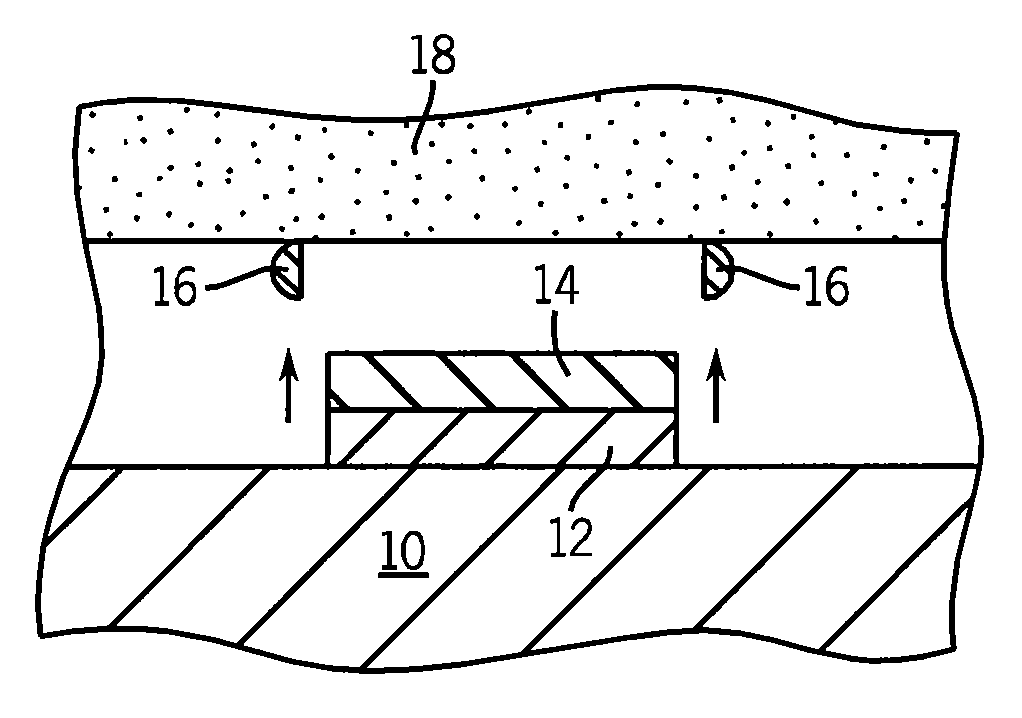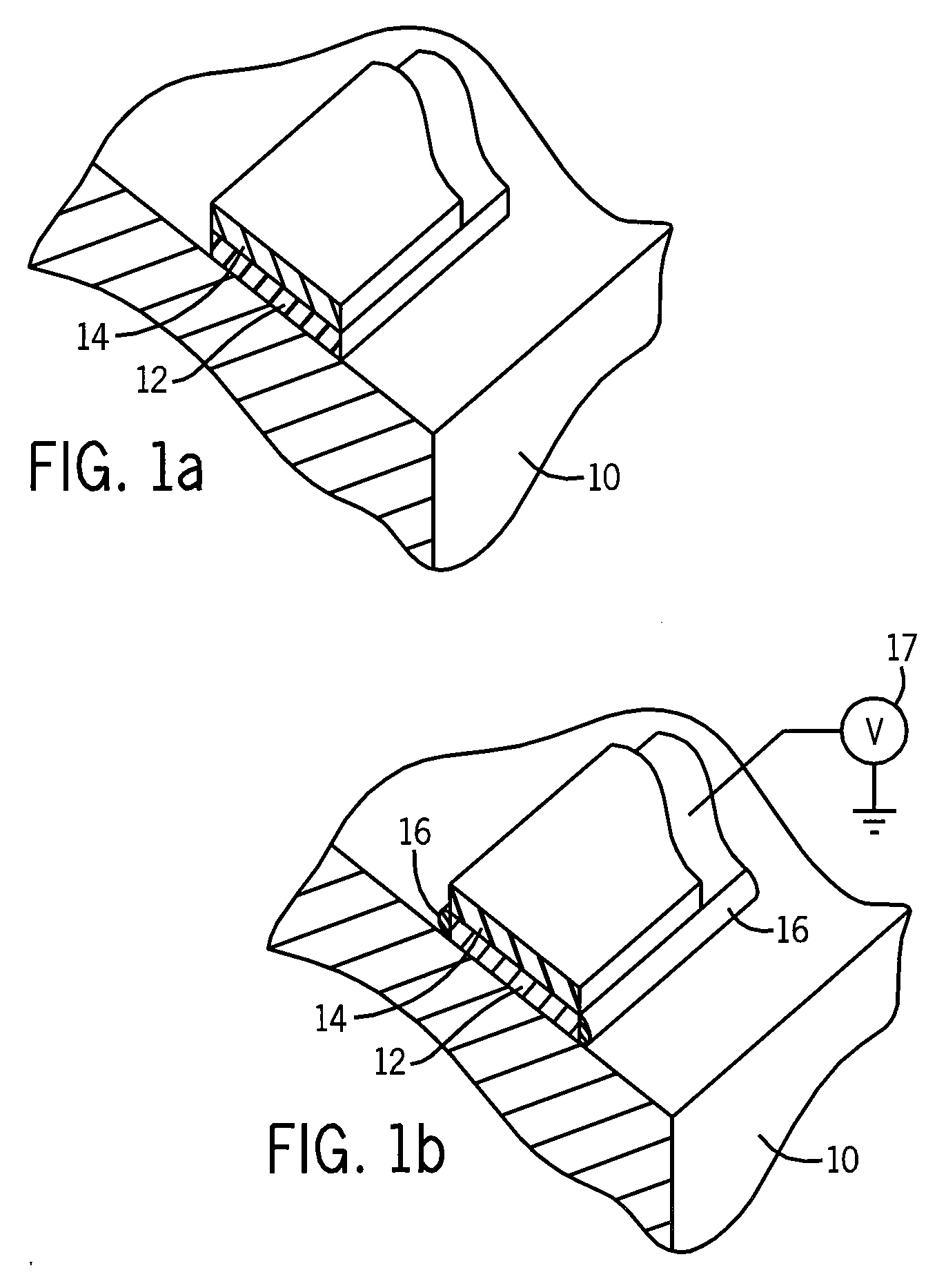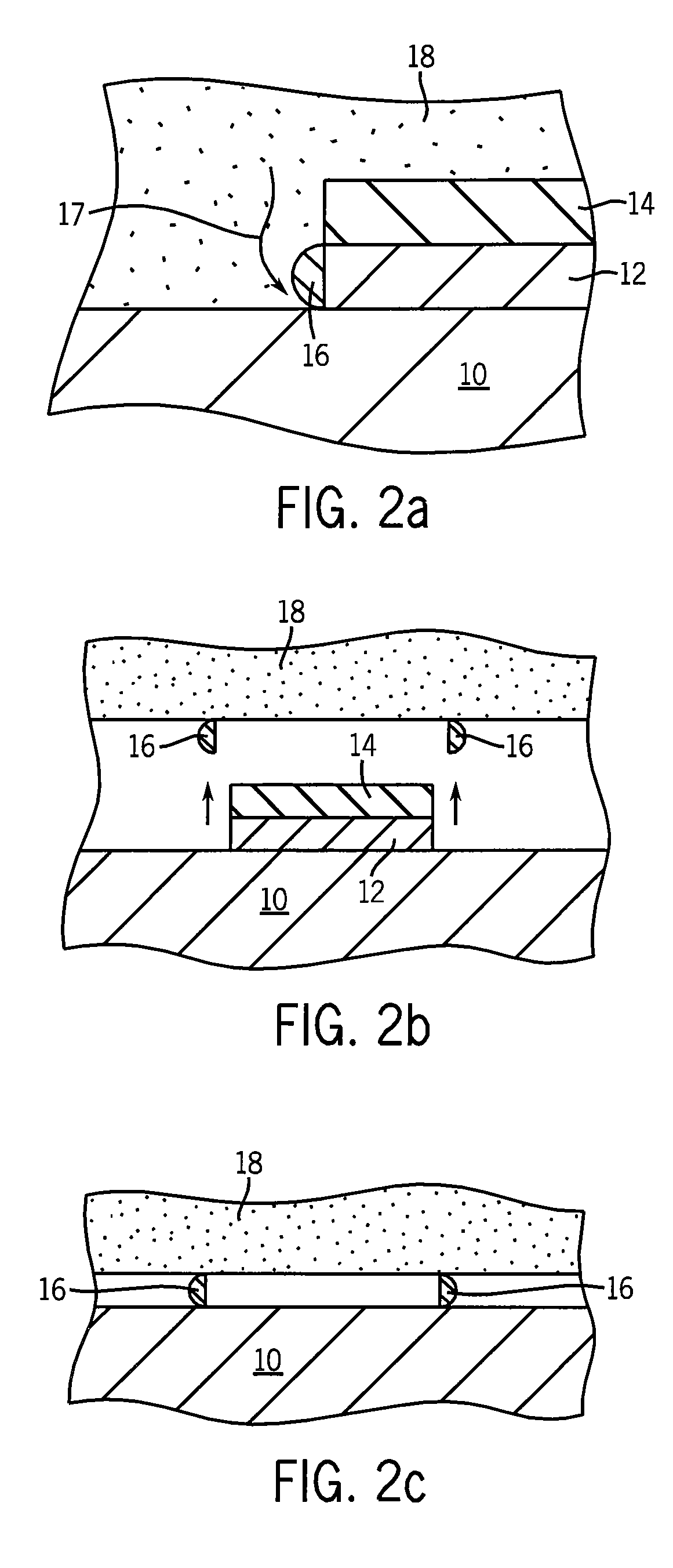Nanowire and microwire fabrication technique and product
a technology of nanowires and microwires, applied in the field of nanotechnology, can solve the problems of difficult fabrication of nanowire devices, irregular orientation of nanowires, and difficulty in controlling the geometry of step edges on the hopg substrate, and achieve the effect of low cohesion
- Summary
- Abstract
- Description
- Claims
- Application Information
AI Technical Summary
Benefits of technology
Problems solved by technology
Method used
Image
Examples
example i
[0053]It is believed that template of the substrate 10 layer 12 and insulating layer 14, produced as described, can be placed in a bath of 5 millimolar sodium tungstate solution with the conductive layer 12 biased at −1.11 volts with respect to the surrounding solution using an electrode in contact with the solution. The voltage may be applied in short pulses according to constant voltage “stop run chronoamperometry” techniques. The wires can then be reduced in a reduction atmosphere of hydrogen heated to 850 degrees Celsius to produce a pure metal.
[0054]Wires having a thickness of substantially 10 nm and thousands of nanometers in length have been produced in this fashion using Highly Oriented Pyrolytic Graphite instead of UNCD. To date this technique has been used to successfully produce wires from cobalt (using an ionic liquid), copper, tellurium, lead, and gold, zinc, platinum, palladium, cadmium, cadmium telluride, cadmium sulfide and zinc sulfide. It is anticipated that this t...
PUM
| Property | Measurement | Unit |
|---|---|---|
| thickness | aaaaa | aaaaa |
| length | aaaaa | aaaaa |
| length | aaaaa | aaaaa |
Abstract
Description
Claims
Application Information
 Login to View More
Login to View More - R&D
- Intellectual Property
- Life Sciences
- Materials
- Tech Scout
- Unparalleled Data Quality
- Higher Quality Content
- 60% Fewer Hallucinations
Browse by: Latest US Patents, China's latest patents, Technical Efficacy Thesaurus, Application Domain, Technology Topic, Popular Technical Reports.
© 2025 PatSnap. All rights reserved.Legal|Privacy policy|Modern Slavery Act Transparency Statement|Sitemap|About US| Contact US: help@patsnap.com



